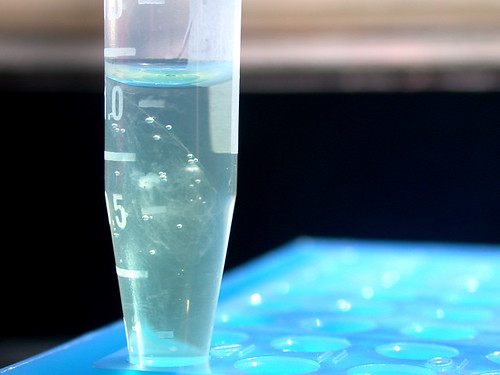Have you ever sat down and pondered the tapestry of your ancestry? It’s a rich mosaic of triumphs, struggles, love stories, and yes, even the darker chapters of human behavior. We all have ancestors who were rapists and murderers. We all have ancestors who were raped and murdered. This isn’t a morbid fascination but a stark reality of the human condition, and it’s one that modern science and dogged detective work are bringing to light in ways our forebears could never have imagined.
The recent sentencing of the ‘Sorority Rapist’ in a Collin County courtroom to life in prison is a chilling reminder of the latent horrors that can lurk in a family tree. Jeffrey Wheat’s conviction, which came more than two decades after his first known attack, was made possible by the advent of new DNA technology. This case, along with others, underscores the relentless pursuit of justice that can span years, even decades, and the role of genetic genealogy in solving crimes that once seemed destined to remain unsolved.

Rick Staub, a retired Plano Police CSI Unit Manager, put it succinctly: “We wouldn’t have solved it, I’m pretty sure, without out genetic genealogy.” This same technology was instrumental in catching the notorious Golden State Killer, illustrating its growing importance in the field of criminal justice.
The journey to Wheat’s identification was arduous, involving years of research and countless DNA samples from possible relatives. Detective Daniel Bryeans, who was assigned to the case in 2018, began by sifting through binders full of documents, videos, and DNA left at the scenes. This DNA was entered into databases used by the public to trace ancestry, a process that would eventually lead to Wheat’s arrest in Arkansas after his identity was confirmed through DNA taken from his daughter and half-brother.

The victims’ emotional toll and detectives’ determination are evident. Reflecting on the crimes, Bryeans stresses the need to persevere. Staub praises the department’s teamwork in bringing closure. Recent arrests in cold cases highlight the power of DNA evidence. Genetic genealogy aids justice but raises privacy issues. Despite concerns, it revolutionizes cold case investigations.
As we delve deeper into the intersection of ancestry and crime, we must also consider the ethical implications of this powerful tool. The balance between solving crimes and protecting individual privacy is delicate and requires careful consideration. The stories of the ‘Sorority Rapist’, James Ray Gary, and Horace Van Vaultz Jr. are just a few examples of how the echoes of our ancestors’ actions can reverberate through the generations, and how modern science is bringing these echoes to light.
In the next section, we will explore the ethical dilemma posed by genetic genealogy, the privacy concerns it raises, and the measures that can be taken to safeguard personal information while still harnessing the power of this technology to solve crimes. The conversation around genetic genealogy is complex and multifaceted, and it’s one that we must engage in with open minds and a commitment to balancing justice with respect for individual rights.
The Ethical Dilemma: Privacy and the Power of Genetic Genealogy
The power of genetic genealogy to solve crimes and bring closure to families is undeniable. However, it opens a Pandora’s box of ethical and privacy concerns that we cannot ignore. The technique relies on individuals uploading their DNA profiles to public databases, which can be a treasure trove for law enforcement but also a potential minefield for personal privacy. The question that arises is: how do we balance the scales of justice and privacy rights?
Consider the case of Michael Usry, who was wrongfully implicated in a crime due to genetic genealogy. This incident highlights the risk of human error and bias in the interpretation of DNA evidence. It’s a stark reminder that while DNA can be a powerful tool in the pursuit of justice, it is not infallible. The implications of such errors are profound, not only for the individuals involved but for the public’s trust in the use of genetic information.
Moreover, the use of public databases for genetic genealogy raises significant privacy concerns. When individuals submit their DNA to these databases, they may not fully comprehend the potential for their genetic information to be used in criminal investigations. This raises questions about informed consent and the ownership of one’s genetic data. Should individuals have the right to control how their genetic information is used, or does the public interest in solving crimes take precedence?
The ‘Sorority Rapist’ case shows genetic genealogy’s success in solving crimes and the potential for more victims. Detective Bryeans’ belief that Wheat has more victims emphasizes the importance of using every available tool. The arrest of James Ray Gary for the unsolved killings of two women demonstrates the effectiveness of genetic genealogy, but raises privacy concerns. Horace Van Vaultz Jr.’s conviction for the rape and murder of two women in the 1980s is another testament to the power of genetic genealogy, but also raises DNA privacy concerns. William Earl Talbott II’s conviction for the murder of a young couple illustrates the potential for genetic genealogy to solve cold cases, but also raises privacy concerns. It’s essential to consider measures that can safeguard personal information while still allowing for the benefits of genetic genealogy in crime-solving.
The intersection of ancestry, crime, and modern science is a complex and sensitive issue. The stories of the ‘Sorority Rapist’, James Ray Gary, Horace Van Vaultz Jr., and William Earl Talbott II are stark reminders of the echoes of our ancestors’ actions. As we harness the power of genetic genealogy, we must tread carefully, balancing the pursuit of justice with the protection of individual rights and privacy. The conversation around genetic genealogy is far from over, and it’s one that requires our thoughtful engagement and a commitment to ethical considerations. Only then can we ensure that the legacy we leave behind is one of justice served with respect for the dignity of all individuals.
Related posts:
How genetic genealogy helped crack the ‘Sorority Rapist’ case
DNA links 76-year-old rape suspect to killings of two women that had been unsolved for decades
Genealogy search helps convict California man in 1980s rape, murder cases





